|
|
|
Sort Order |
|
|
|
Items / Page
|
|
|
|
|
|
|
| Srl | Item |
| 1 |
ID:
119277
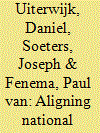

|
|
|
|
|
| Publication |
2013.
|
| Summary/Abstract |
This article analyzes the public side of the NH90 network consisting of four participating countries (Germany, France, Italy, and the Netherlands) and their industrial partners. Comparable to observations in earlier international projects in the defense sector, the development and production of the NH90 defense helicopter did not match original plans and costs estimates. On the basis of four mechanisms that were intended to facilitate the cooperation between the partnering countries (the General Memorandum of Understanding; coalition formation; the role of the central agency; and the process of vertical escalation) the question is posed whether or not there was a true alignment of national interests and "logics." The lack of standardization, as well as program delays and issues concerning the division of the work-share, lead to the emerging alignment being characterized as "quasi-alignment" at best.
|
|
|
|
|
|
|
|
|
|
|
|
|
|
|
|
| 2 |
ID:
172381
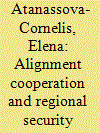

|
|
|
|
|
| Summary/Abstract |
Although the US-led system of formal alliances remains the main pillar of the regional security architecture in Asia, alignment cooperation – centred on the Indo-Pacific maritime conceptualisation of the region – has been on the rise. This includes informal bilateral and minilateral agreements for security collaboration between regional and extra-regional US treaty allies or close security partners, notably Japan, Australia, India, the United Kingdom and France. While the various alignments complement and address the deficiencies of the formal US-led alliances, the functional and informal characteristics of alignments allow countries to pursue security cooperation both in conjunction with the United States and independently of it. This leads to a more fluid security architecture that increasingly reflects the diversity of emerging regional ‘architects’, among which Japan is assuming a leading role, as much as the region’s array of new security challenges.
|
|
|
|
|
|
|
|
|
|
|
|
|
|
|
|
| 3 |
ID:
166025
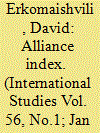

|
|
|
|
|
| Summary/Abstract |
Orthodox approaches developed by Alliance Theory to study alliances are characterized by static and state-centric focus, which exposes theory’s logical limitations. In contrast, modern alignments are marked by continuous oscillations. Alignment stability—according to orthodox Alliance Theory—may be altogether misleading for the explanation of behaviour in alignment. This article theoretically re-conceptualizes the key notion of the orthodox Alliance Theory—the concept of alliance. Building on the basis of isolated but significant fragments of advanced research, the theoretical essence of the Alliance Theory is adjusted to encompass alignment process. Importantly, such a re-calibration bears in on an overlooked element common to all alignments—fluidity. Theoretical modification resulted in two important outcomes. First, the change of the vantage point in explaining alignments theoretically extends the orthodox Alliance Theory’s traditionally limited applicability, which excluded subnational and non-state actors. Second, the change allowed reviewing the essence of alignments focusing on a persistently evolving process, rather than on alignments’ institutional image. Sustained realignment, upgrading or downgrading of cooperative relations between actors and concurrent alignment to rival parties is no more confusing in explaining alignments. The article develops an alignment index and calculates it for the post-Soviet space.
|
|
|
|
|
|
|
|
|
|
|
|
|
|
|
|
| 4 |
ID:
171048
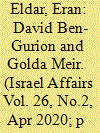

|
|
|
|
|
| Summary/Abstract |
Relations between David Ben-Gurion and Golda Meir were complex and saw many ups and downs over the years. Having enjoyed fruitful collaboration prior to and after Israel’s establishment, with Meir even appointed foreign minister at the height of her career, they were never close friends. The relationship took a steep downhill course in the early 1960s, culminating in Ben-Gurion’s secession from the ruling Mapai party and the establishment of his own rival Rafi party. This article describes and analyzes the complex relationship and the rift between these two central leaders of Mapai and its impact on the party and on the political map.
|
|
|
|
|
|
|
|
|
|
|
|
|
|
|
|
| 5 |
ID:
172388
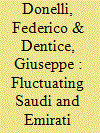

|
|
|
|
|
| Summary/Abstract |
The overthrow of Omar al-Bashir after three decades of rule has brought to light a dynamic that has been present for years: an interweaving of political, economic and security issues between the states of the Horn of Africa and the Gulf monarchies. Since 2011, the most active powers are the Kingdom of Saudi Arabia and the United Arab Emirates, which seek political support to counter both Iran’s influence and the growing Turkish presence. The two Gulf monarchies’ search for alignments with African counterparts has favoured the continuous reshuffling of alliances with direct effects on the local actors’ strategic choices. These dynamics need to be considered to understand the determinants behind the currently increasing instability in the Red Sea area.
|
|
|
|
|
|
|
|
|
|
|
|
|
|
|
|
| 6 |
ID:
160292
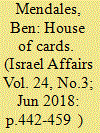

|
|
|
|
|
| Summary/Abstract |
For the first 28 years of Israel’s existence, the Arab minority was represented in the Knesset by a series of ‘satellite lists’ affiliated mainly with the Mapai party and, later, with the Alignment (Labour). This article explores the role of the satellite lists in the early years of the state, and the reasons for their ultimate demise. The fate of these lists would be inextricably tied to the overall political development and political liberation of their constituencies. Their relative success was intimately connected to the disarray of Palestinian Arab society after the 1948 war, the political isolation of the Arab minority and a belief held by the Jewish leadership that the traditional Arab notability could be co-opted. The satellite lists could not survive for long once these factors were mitigated and a more authentic alternative leadership had evolved.
|
|
|
|
|
|
|
|
|
|
|
|
|
|
|
|
| 7 |
ID:
159630
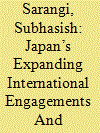

|
|
|
| 8 |
ID:
175052
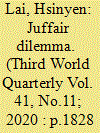

|
|
|
|
|
| Summary/Abstract |
This paper challenges ‘the myth’ of the demise of Arab nationalism after the Arab–Israeli War in 1967 that appears in the scholarship of international relations of the Middle East (IRME). I argue instead that Arab nationalism plays a constitutive role in ideologically linking the issue of Bahrain’s post-colonial state sovereignty and foreign policy on alignment, showing its political salience after 1967 in what I call ‘the Juffair dilemma’: the Al Khalifa regime’s dilemma in aligning with the US after Bahrain’s formal independence. Drawing on Antonio Gramsci’s ‘national-popular collective will’ to re-conceptualise Arab nationalism, the paper further argues that the impact of Arab nationalism on Bahrain’s alignment was revealed through a political struggle between the Al Khalifa regime and the Bahraini New Arab Left, corresponding to wider regional and international anti-imperialist movements in the context of the Cold War. This struggle manifested Arab nationalism as a non-collective will, in which ideological disconnections existed between ‘the people’ and the regime, in Bahrain. It then created the context where the issue of alignment was related to the contestation of sovereignty and the Palestinian question, which was the source of the Al Khalifa regime’s dilemma in making alignment with the US.
|
|
|
|
|
|
|
|
|
|
|
|
|
|
|
|
| 9 |
ID:
098469
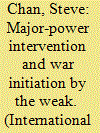

|
|
|
|
|
| Publication |
2010.
|
| Summary/Abstract |
Weak states often instigate war against the strong, sometimes repeatedly so. I explain this phenomenon by recourse to the nature of the contestants' foreign alignments. Pivotal patronage, balanced patronage, competitive patronage and one-sided patronage are offered as ideal types, and five rivalry cases are introduced to highlight the variations in the willingness and opportunity for war initiation by the weaker side and the intensity and duration of the subsequent conflict (should it occur). Whether the pertinent international system is unipolar, bipolar or multipolar distinguishes the alignment types, which in turn point to the concerns for relative gain and credible commitment that motivate the weaker side's decisions.
|
|
|
|
|
|
|
|
|
|
|
|
|
|
|
|
| 10 |
ID:
152093
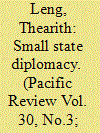

|
|
|
|
|
| Summary/Abstract |
Cambodia's foreign policy behavior towards Vietnam can be characterized as using a strategy of ‘hedging’, whose nature is different from the one suggested in the existing literature. Such a strategy can be discerned from Cambodia's omni-directional policy responses, ranging from economic pragmatism, limited bandwagoning, binding engagement and soft-balancing. Furthermore, the case of Cambodia's foreign policy towards Vietnam suggests that non-state actors, such as the opposition party and the population (voters) play a significant role in shaping the state's foreign policy, even though it is formed under the authoritarian ruling party. This study also suggests that the foreign policy decisions of an authoritarian state are not solely shaped by the personal attributes of their leader.
|
|
|
|
|
|
|
|
|
|
|
|
|
|
|
|
| 11 |
ID:
098960
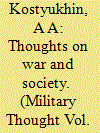

|
|
|
| 12 |
ID:
186166
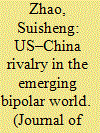

|
|
|
|
|
| Summary/Abstract |
This article argues that although the US–China rivalry has not presented with some essential elements of the US–Soviet Cold War, the emerging bipolarity has led to misplaced ideological hostility and repeated failling attempts of building alliance systems. Delicate power balance between the two countries has further complicated the rivalry by giving each side the false conviction to prevail.
|
|
|
|
|
|
|
|
|
|
|
|
|
|
|
|
| 13 |
ID:
169222


|
|
|
|
|
| Summary/Abstract |
The changes in the US-Japan alliance are taking place in times of a global power shift – a transition from unipolarity to multipolarity – and China’s challenge to the US’ security dominance in the Asia-Pacific. The alliance security dilemma now manifests itself in the rise of ‘entrapment’ concerns for Washington and ‘abandonment’ anxieties for Tokyo. The US increasingly insists on more mutuality in alliance arrangements, while seeking to maintain ambiguity in its defence commitments to Japan. The relative decline of US power and the fluid regional security architecture, however, incentivise Japan to step up preparations for abandonment. Although Tokyo’s hedging strategy contributes to enhancement of the bilateral alliance in the short term, it also paves the way for Japan’s pursuit of strategic autonomy in the medium to long term.
|
|
|
|
|
|
|
|
|
|
|
|
|
|
|
|
|
|
|
|
|